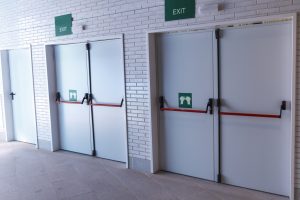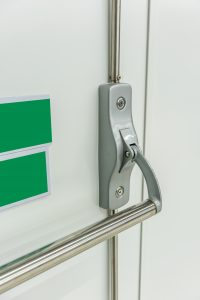Fire Doors are one of the most important, yet often overlooked, fire safety products on your premises. The correct specification, supply, fitting and maintenance are critical and the responsibility of each and every person in the process.
Regrettably, it is only when a fire breaks out that the consequences of poorly manufactured or fitted fire doors are known.
What areas do we cover for Fire Doors?
Total Safe specialise in the surveying, restoration and installation of fire doors throughout the South-East.
What should you expect to happen during an installation?
The installation of fire doors should only be carried out by someone who is competent. They also need to have been specifically trained to install such equipment, and understand their responsibilities in getting it right. Installation involves:
- Fitting the frame for the door, checking that it is securely fixed on all sides
- Measuring the frame to ensure it is straight, square and level, and will fit the intended door
- Checking the gap between the frame and the wall is completely sealed, backfilling any gaps as necessary
- Fitting the hinges, locks and/or latches correctly
- Installing the door itself following guidelines to ensure compliance
- Testing the door opens and closes in a smooth action, ensure that on closing, the door is straight against the stop on the frame
- Checking that any smoke seals fill the gap around the perimeter of the door or frame

What happens next?
Unfortunately, due to the nature of fire doors being used on a regular basis, they are at a greater risk of damage and abuse. This can seriously compromise the fire protection in your building. Regular maintenance and inspection, therefore, is essential.
Whether you are in need of a full replacement or upgrade of existing door sets, our engineers have both the expertise and experience to carry out the services you need to the highest standard.
Total Safe offer a consultative approach to ensure all our clients receive the best possible solutions to maximise cost effectiveness and reduce potential long-term maintenance costs.
We advise periodic checks to be carried out at least once every 6 months. However, newly occupied buildings may require more frequent checks in their first year of use.
